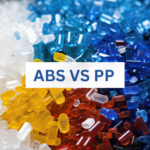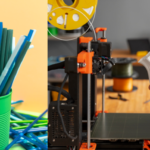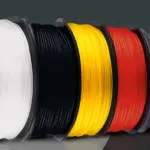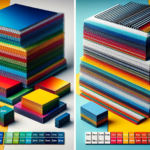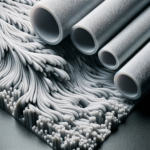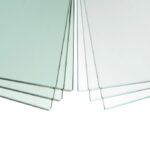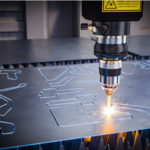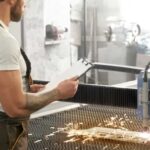Plastics are adjustable materials with various polymer options. They are among the most commonly used materials in the manufacture of end-use items. These products range from consumer goods to medical supplies. Plastic fabrication has been an important aspect of the plastic industry for many years.
It consists of developing, manufacturing, and assembling plastic objects using various processes. There are numerous plastic processing methods. The diverse options make it tough to select the best for certain purposes. Testing new types of plastics, creating new plastic goods, and purchasing cutting-edge tools to create plastics better and quicker are all part of custom plastic fabrication.
This article will guide you through some of the most common plastic fabrication processes. It will help you in understanding the things to consider while selecting the optimal plastic production method.
Let’s get started!
Table of Contents
Different Types of Plastic Fabrication Processes
-
Injection Molding
This is one of the most common plastic processing methods. Melting plastic pellets, which could be thermosetting or thermostatic polymers, is involved in this process.
Once the melted plastic pellets are flexible enough, they are injected under pressure into a mold cavity. Injection into the mold cavity fills and solidifies the plastic, resulting in the finished product.
In any plastic manufacturing company, plastic injection molding is a standard method. It could involve a steel mold or aluminum. Metal mold is the most widely used. It conducts heat more effectively than steel mold. As a result, cooling channels are not required.
Injection molding is the most versatile molding technique available out there. Injection molding uses the different size of pressers which are determined by the product’s pressure and tonnage.
Injection molding is capable of producing large items such as plastic vehicle parts as well as small plastic components for surgical applications. Injection molding is a more expensive plastic molding process that is only used to make plastics with a high melt index.
Injection molding helps in the production of huge quantities of parts. The typical application is in mass-production procedures where the same part must be created thousands of times in succession.
-
Vacuum Casting
When you require a cost-effective alternative to the injection molding technique, then an excellent solution. It is a process for custom plastic production that is similar to ‘copying.’
Vacuum casting is the process that involves producing a small series of functional functioning plastic pieces or prototypes. As a result, a master model with a high-quality surface finish is required for an efficient vacuum casting process. The master model is often created using Laser Sintering or Stereolithography by the manufacturers. Continuing the process, the master model is then encapsulated in a silicone mold in the following stage.
The silicone mold is cured at high temperatures, ensuring its strength and durability. The mold is sliced open after curing, revealing a hollow space with the same size as the master model.
In a vacuum chamber, the cut mold is filled with the specified resin material. Many manufacturers combine resin with color pigment or metallic powder. As a result, you can be sure of obtaining aesthetic or practical attributes. The resin is finally cured in an oven at high temperatures, following which the silicone mold is removed.
Vacuum casting plastic forming process gives a high precision end product. Even if the geometry is complex, the completed product appears exactly like the original. Furthermore, due to the low cost of silicone, vacuum casting is more cost-effective. Furthermore, a previously used mold can be used to create a variety of other items.
-
Blow Molding
Here’s another popular plastic production method. It involves inflating hot plastic tubes to form hollow plastic pieces. In blow molding, the raw material is thermoplastic pellets, which can be any of the following:
- High-Density Polyethylene (HDPE)
- Low-Density Polyethylene (LDPE)
- Polyethylene Terephthalate (PET)
- Polypropylene (PP)
- Polyvinyl Chloride (PVC)
- Polystyrene
- Co-polyester
Plastic blow molding is similar to glass molding. The parison is initially filled with air. This air is then pressed against the desired size plastic mold. The plastic is released from the mold when it has cooled. Blow molding is a simple and linear process that can quickly produce high volume, one-piece hollow items. Blow molding is primarily used to manufacture plastic bottles, fuel tanks, and other cavity-based plastic components.
To begin, the thermoplastic pellets are melted into a hollow tube known as the parison. The parison can be formed in a variety of ways. They are as follows:
- Extrusion Blow Molding: In this case, a revolving screw aids in forcing melted plastic through a die head, resulting in the formation of a blow pin parison. The parison is then extruded between two open molds in the following phase. By blowing pressured air through the blow pin, the parison inflates.
- Injection Blow Molding: A hollow parison is formed using the injection molding process. The core and parison are then transferred into the blow mold and tightly fastened. When the core opens, pressurized air inflates the parison. This strategy is best suited to tiny applications.
- Stretch Mold Molding: Stretch molding produces parison in the same way as injection blow molding does. Heating and stretching of the core occur before inflation once the parison is sent to the blow mold by the maker. Stretching increases the strength of the plastic. Parts made from custom plastic fabrication are extremely durable. They are able to tolerate internal pressure.
-
Thermoforming
This is a unique process that requires heating thermoplastic to a flexible temperature. In the mold, the heated thermoplastic can be molded into a specified shape. It will then be cut to form the finished product.
To complete the parts, thermoforming can be used in several mold types and methods. It could involve bending plastic sheets on strip heaters. Vacuum forming is also used in the molding of complicated plastics.
Tooling costs for thermoformed items are often lower. This is due to the instrument’s inability to work at extremely high temperatures and pressures. Thermoforming is a diverse and effective method. It helps in the production of plastic parts such as disposable cups, medical equipment, and other items.
Choosing the Right Plastic Fabrication Process
Before selecting a plastic manufacturing method for your product, keep the following factors in mind:
-
Form
Different plastic parts have different characteristics and tolerance needs. It is best to consider these factors before deciding on a plastic fabrication process. The manufacturing processes may depend on the geometry of the design. It may also need the optimization of design for production optimization (DFM). This ensures more cost-effective production.
-
Material
What extreme conditions will your product endure? When selecting material for your applications, you must consider some factors. You need to consider the aesthetic and practical requirements and must balance them with cost. Check out the best features of the applications. Then, compare them with the existing manufacturing processes.
-
Cost & Volume
The total volume of the parts you want to manufacture is important. Some processes have additional setup and tooling costs. However, they do make low-cost parts on a per-part basis. On the other hand, some low volume processes offer lower setup costs with a constant cost per part. This is due to longer cycle times, more manual labor, and less automation.
-
Lead Time
Another important element to consider is how soon you require the finished products. Some fabrication technologies can produce the initial few sections in a single day. Tooling and setup are other more high-volume operations that might take months.
Steps Required to Follow to make a Custom Designed Plastic
The basic steps involved in producing custom designed plastic parts are listed below:
-
Draft a design
The first stage is to come up with a design for the plastic parts that must be made. The procedure begins with a rough sketch of the design on a sheet of paper. It is critical to include all geometric elements. The design is then turned into a 3D model. At this point, several revisions to the design of the part are frequently required to make it feasible and useful.
-
Choose plastic resin
Once a 3D model has been developed, it is time to discuss and select the sort of resin that will be used to manufacture the item. In terms of hardness, flexibility, and durability, all plastic resins differ. Furthermore, the prices of plastic resins fluctuate. As a result, it is important to find a balance between the costs and the functionality of the required plastic item.
-
Select the type of plastic molding process
Plastic part manufacturers all over the world use various molding techniques. However, plastic injection molding is often regarded as the most superior and popular process. The process of choosing is usually determined by the design, the applicability of the products, the number of plastic parts required, and the manufacturing time available.
Plastic injection molding balances all of the aforementioned criteria to provide users with useful, long-lasting, and cost-effective plastic parts.
-
Create a prototype
Creating a prototype is not always essential, but it is strongly suggested. Creating a prototype that resembles the final product allows you to identify design faults before the plastic parts are mass-produced.
It is not always feasible to see the problems on a 3D model until it is live. Checking the prototype aids in the resolution of faults that may otherwise go undetected.
Plastic part makers offer a variety of prototype tools, such as resin prototype machines.
-
Make the designed part
Now, the concept has been presented, the 3D model has been constructed, the budget has been agreed, the plastic resin has been chosen, and the prototypes have been approved. Finally, the product is ready to be manufactured.
Choosing a reputable manufacturer will go a long way toward ensuring that your custom plastic components are exactly what you want.
Most manufacturing firms are competent to manage all of the aforementioned steps for their consumers.
Important Tips to improve the efficiency of the manufacturing plastic parts
Even though each of the aforementioned processes is theoretically well planned out, problems can occur during the process. In the end, it all comes down to execution. A well-executed project minimizes hassles.
Here are some helpful tips to ensure that your plastic part production process runs smoothly:
- Choose your design and manufacturing team with care, also make sure that the people you hire have enough experience. It is important that professionals assist you in identifying flaws in your design before you spend your entire money on bulk manufacturing.
- Take risks and be open to new experiences. After all, this is your original concept.
- While you should put on a brave face by taking chances, you need also be practical in your approach. Be understanding and open with your team and open to incorporating proposed modifications.
- Choose quality over price. While economic constraints must always be considered when selecting a material, the quality of your plastic parts will ultimately determine your market position. Make certain that you do not sacrifice quality in order to save money.
- Throughout the process, keep in touch with your manufacturing team and stay in the loop.
Wrapping Up!
Choosing the best plastic fabrication process requires a thorough understanding of plastic fabrication. As you can see, we have introduced the most important plastic production processes. The information provided here will assist you in understanding what it includes. We also covered the various factors to consider while selecting the best process for your application.
